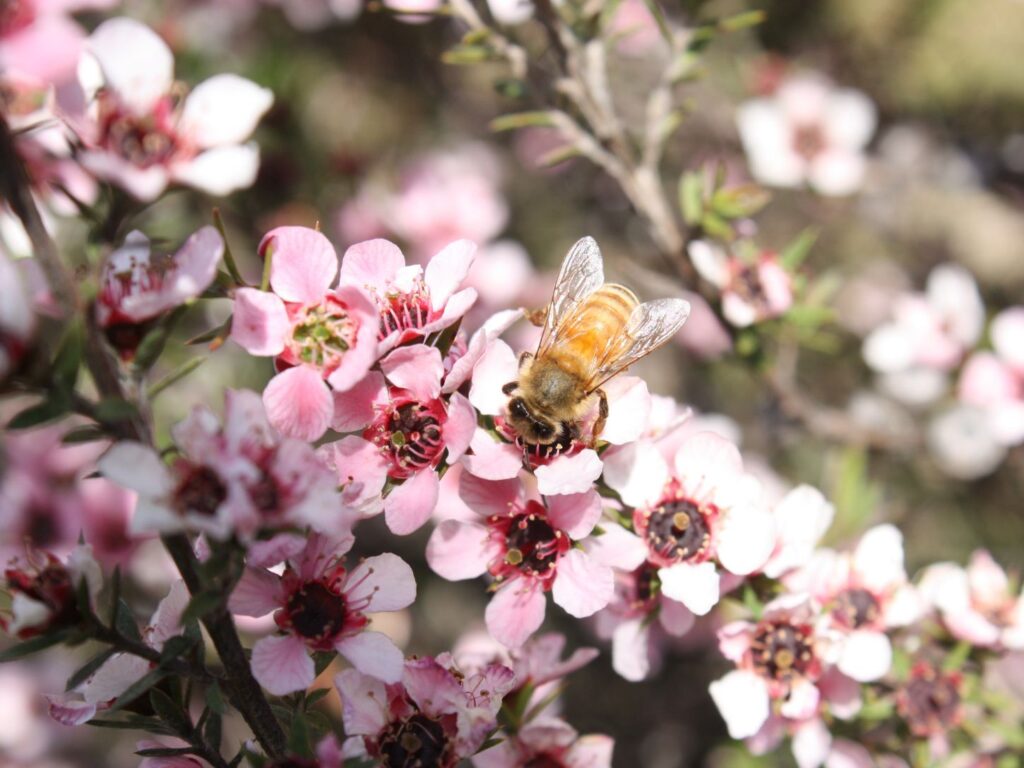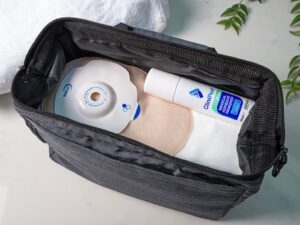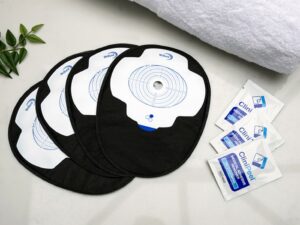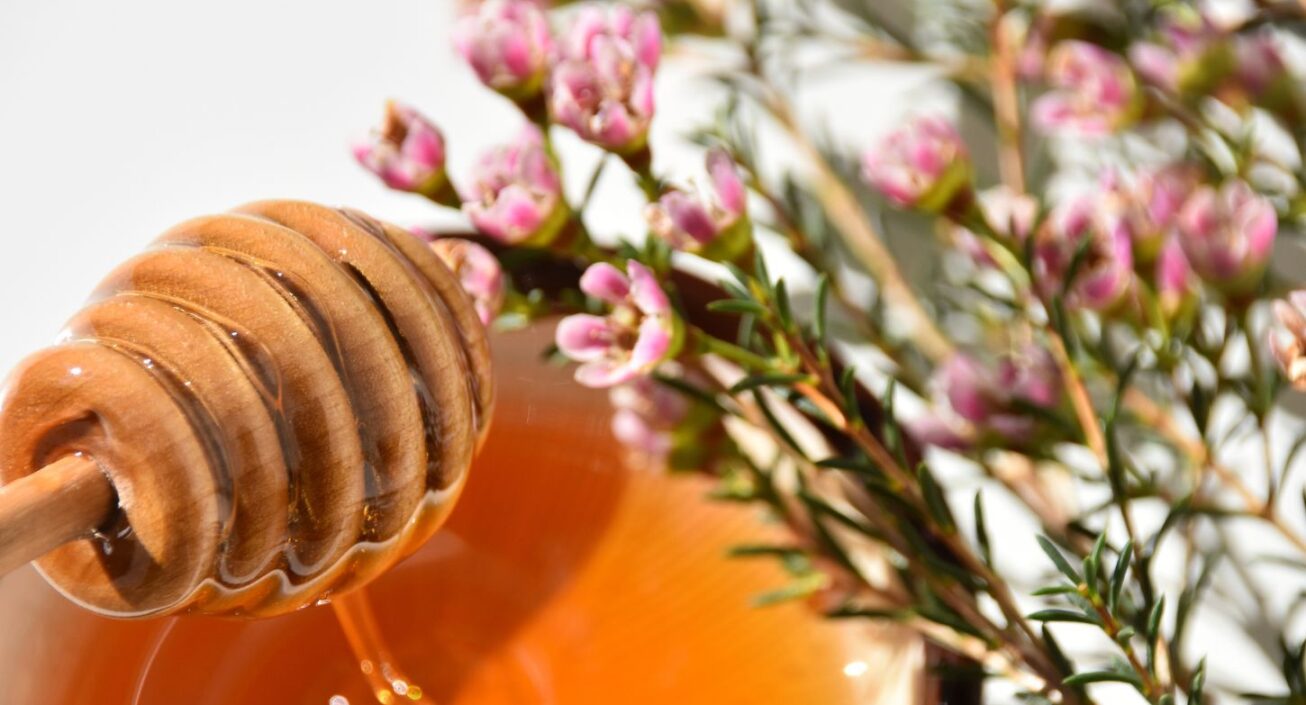Manuka honey can be found in a range of our products, but what makes Manuka honey so special, and why has it been used in medicine for centuries?
A History of Honey
Manuka honey is a unique natural remedy which has uses across many therapy areas. Native to New Zealand, this special honey is produced by bees that pollinate the Leptospermum scoparium, or Manuka bush.
What sets Manuka honey apart from other types of honey is its remarkable antibacterial properties, along with its antiviral, anti-inflammatory, and antioxidant effects.1,2 Throughout history, honey has been used to treat wounds, soothe sore throats, improve digestion, and prevent tooth decay.3,4,5 However, Manuka honey takes these benefits to a whole new level.
In more recent history, during World War I, honey was utilised in Russia and Germany to expedite wound healing and prevent infections in wounds and burns6,7. By this time researchers had uncovered the scientific benefits and antibacterial properties of honey. More recently, Manuka honey has emerged as a well-established agent with proven health benefits and unique antibacterial properties.

The Science Part
One of the key factors contributing to Manuka honey’s remarkable antibacterial properties is its high levels of the compound methylglyoxal (MGO). Research has shown that MGO effectively inhibits and kills bacteria whilst being kind to skin, minimising the risk of damage to healthy tissue.8,9
The low water activity of Manuka honey contributes to its antibacterial properties. With limited water availability, microorganism growth is hindered. Honey’s high sugar content creates an osmotic pressure within bacterial cells, causing the transport of water out of the bacteria and impeding bacterial growth.10 When this osmotic effect occurs on the skin, this prevents bacteria from multiplying and can contribute to a healthy skin environment.
Manuka honey’s acidity and low pH are also beneficial. The skin’s natural pH ranges from 4 to 5.5, creating an acidic barrier known as the acid mantle. This protective layer guards the skin against harmful contaminants such as bacteria and viruses while maintaining healthy moisture. Manuka honey can help maintain the skin’s natural barrier.
Manuka honey in the medical field
In the medical field, Manuka honey has become a popular and effective treatment in wound care. Many sterile dressings now contain Manuka honey, specifically designed to create an optimal environment for skin healing. Manuka honey has gained popularity in the skincare and cosmetics industry, with cleansers, masks, and creams incorporating this powerful ingredient in everyday products and skin care routines.
References
- Johnston, M., McBride, M., Dahiya, D., Owusu-Apenten, R., & Nigam, P. S. (2018). Antibacterial activity of Manuka honey and its components: An overview. AIMS Microbiology, 4(4), 655-664. doi:10.3934/microbiol.2018.4.655
- Ahmed, S., Sulaiman, S. A., Baig, A. A., Ibrahim, M., Liaqat, S., Fatima, S., Jabeen, S., Shamim, N., & Othman, N. H. (2018). Honey as a Potential Natural Antioxidant Medicine: An Insight into Its Molecular Mechanisms of Action. Oxidative Medicine and Cellular Longevity, 2018, Article ID 8367846, 19 pages. https://doi.org/10.1155/2018/8367846
- Nayak, P. A., Nayak, U. A., & Mythili, R. (2010). Effect of Manuka honey, chlorhexidine gluconate, and xylitol on the clinical levels of dental plaque. Contemp Clin Dent, 1(4), 214-217. doi: 10.4103/0976- 237X.76386
- Yaghoobi, R., Kazerouni, A., & Kazerouni, O. (2013). Evidence for Clinical Use of Honey in Wound Healing as an Anti-bacterial, Anti-inflammatory, Antioxidant, and Anti-viral Agent: A Review. Jundishapur J Nat Pharm Prod, 8(3), 100-104. doi: 10.17795/jjnpp-9487
- Schell, K. R., Fernandes, K. E., Shanahan, E., Wilson, I., Blair, S. E., Carter, D. A., & Cokcetin, N. N. (2022). The Potential of Honey as a Prebiotic Food to Re-engineer the Gut Microbiome Toward a Healthy State. Front Nutr, 9, 957932. doi: 10.3389/ fnut.2022.957932
- Allen, J. P., & Mininberg, D. T. (2005). The Art of Medicine in Ancient Egypt. Metropolitan Museum of Art, New York, N.Y.
- Eteraf-Oskouei, T., & Najafi, M. (2013). Traditional and modern uses of natural honey in human diseases: a review. Iranian journal of basic medical sciences, 16(6), 731–742.
- White, P., & Evans, M. (2019). Clinical governance for ostomates at risk of peristomal skin complications. British Journal of Nursing, 28(16), 24-32.
- Rabie, E., Serem, J. C., Oberholzer, H. M., Gaspar, A. R., & Bester, M. J. (2016). How methylglyoxal kills bacteria: An ultrastructural study. Ultrastruct Pathol, 40(2), 107-111. doi:10.3109/01913123.2016.1154914
- Juliano, C., & Magrini, G. A. (2019). Methylglyoxal, the Major Antibacterial Factor in Manuka Honey: An Alternative to Preserve Natural Cosmetics? Cosmetics, 6(1), 1. https://doi.org/10.3390/cosmetics6010001
- Albaridi, N. A. (2019). Antibacterial Potency of Honey. Int J Microbiol, 2019, 2464507. doi:10.1155/2019/2464507



